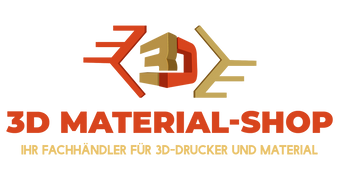3D printing as an integral part of manufacturing and development.
Additive manufacturing is increasingly finding its way into the production facilities of German companies. The 3D printing process, which was dismissed as a gimmick in the past, has now gained a higher status.
This is mainly due to the fact that 3D printing systems have constantly evolved. The variety of materials and 3D printing processes that can be used means that there are more and more possibilities and fields of application.
In our multi-part article we give you an insight into possible areas of use and applications for which 3D printing can be used profitably.
Prototype production and display models:
In the field of prototype production, 3D printing has been indispensable for several years.
With the shortening of product life cycles and the increasing individualization of products, 3D printing can demonstrate its advantages.
Additive manufacturing offers the user the opportunity to create several product iterations in a relatively short time or in one printing process in order to achieve enormous potential savings of up to 75% compared to to achieve the conventional manufacturing processes.
An example:
The company "Phantasie GmbH" plans to introduce a new design for its colorful flower vases. The company's planners and designers need 7-14 days to create the construction (construction) drawing. Subsequently, another 21 - 28 days per mold are required for the construction and tool construction (mold halves, cores and slides) of one or more mold(s). The company has set an average processing time of 1 - 2 days for any post-processing steps such as correction loops. Now the actual model of the flower vase can be produced by injecting the casting material using the injection molding process.
Cost factors in the production of injection moulding:
- component complexity
- component size
- accuracy
- number of pieces
Total duration: 29 - 44 days ; Total costs: approx. €10,500.00
Alternatively, the company manufactures its tool holder using additive manufacturing. The expenditure of time and costs for the construction (construction) drawing is almost identical to the conventional approach. However, the production only takes 1-3 days, since several iterations can be created in one printing process and no upstream mold construction is required for modeling. For the post-processing of complex component geometries with overhangs that are held by support structures, we again set a generous 1 - 2 days in this example.
In short: create a virtual model, select the material, set up the 3D printer, select the appropriate printing parameters, have it printed, post-process it.
Cost Factors in 3D Printing Modeling:
- use of materials
- build volume
- post processing
Total duration: 14 - 24 days ; Total costs: approx. €2,500.00
Total savings potential:
Time saving: 19 - 23 days ; Cost savings: approx. €8,000.00 (~76%)
This simplified, fictitious example makes it very clear how enormous the savings potential can be in the production of prototypes from a time and cost point of view. Of course, this information varies depending on the component dimension/complexity and due to any post-processing steps and joining processes, due to the model creation in several components.
In a further contribution we devote ourselves to the small series production and the production of spare parts, as well as the development of assembly aids and brackets.
Do you have questions about the areas of application and possibilities of additive manufacturing?
No problem, contact our friendly service team during our office hours, also by phone or via our contact form .

![3DGence INDUSTRY F350 - [3dmaterial-shop]](http://3dmaterial-shop.de/cdn/shop/articles/AJ4A0345.jpg?v=1619965305&width=1600)
![Polymaker PolyTerra PLA Dual 1,75mm 1kg - [3D Material-Shop]](http://3dmaterial-shop.de/cdn/shop/files/PolyTerra-Dual-PLA_1-75mm_1kg_Foggy-Purple-Purple_600x600_d536672b-71f5-4400-a9af-a045bd9a226d.jpg?v=1700312155&width=176)